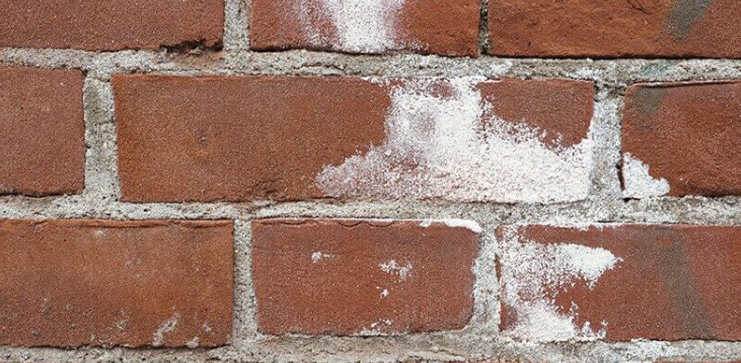Efflorescence
Menu
- Membership
- Services & advice
- Products
- Training
- What's on
- News & publications
- Homeowners
- About
- Contact
- Terms & conditions
As Queensland is a humid state, it's important you keep an eye out for efflorescence.

What is efflorescence?
Efflorescence is the white, powdery or crystalline deposit that appears on the surface of masonry, concrete, render, or tiles.
It’s caused by water-soluble salts moving through the material and crystallising on the surface as the water evaporates.
How it happens
- Moisture enters the porous material (brick, mortar, concrete, etc.)
- The water dissolves salts that are naturally present in the material or mortar
- As the moisture migrates to the surface and evaporates, it leaves behind the salt crystals, forming a white residue.
Efflorescence = salts + moisture + evaporation path.
Common causes
Common causes of efflorescence are:
- High moisture exposure (rain, rising damp, leaking gutters, poor drainage)
- Poorly detailed flashings or damp-proof courses
- Using bricks, mortar, or concrete with high salt content
- Inadequate curing or protection during construction (e.g. rain on fresh walls)
- Lack of ventilation preventing moisture escape.
Where it appears
Efflorescence can appear within:
- Brickwork and blockwork façades
- Concrete slabs and driveways
- Retaining walls
- Tiled surfaces (especially near water)
- Rendered or painted masonry.

How to remove it
- Dry brushing or washing with clean water often removes mild efflorescence.
- For heavier deposits: use a mild acidic cleaner (like diluted white vinegar or proprietary efflorescence remover), followed by thorough rinsing.
- Always test on a small area first — strong acids can damage mortar or finishes.
How to prevent It
- Use low-salt bricks, mortar, and concrete.
- Ensure adequate damp-proofing and flashing.
- Seal or protect masonry during construction to prevent saturation.
- Provide good drainage and ventilation around walls and cavities.
- Avoid trapping moisture behind coatings or membranes.
QBCC Standards and Tolerance Guide (December 2023)
Within the first 12 months from completion of the work, calcification or efflorescence caused by water coming from a deck or balcony that occurs on walls below or beside the deck or balcony, or that appears in the mortar joints of the deck or balcony tiling, is a defect.
Need more information?
If you haven’t found the answer to your questions on our website, give us a call or email us.





